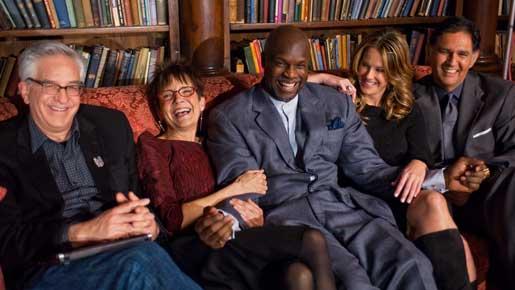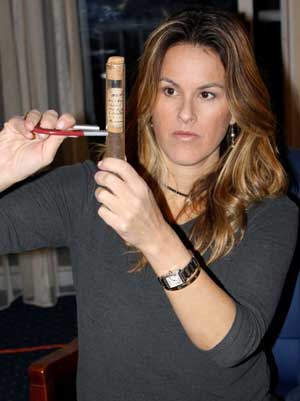
History Detectives starts its ninth PBS season this week (Tuesday 8 p.m. ET; check local listings), and that's notable for several reasons.
The series has longevity, something the television business displays little of anymore. It has lasted because its premise -- discovering whether privately owned items have a historical significance -- is one-of-a-kind, and is produced in a way that genuinely holds a viewer's interest. And it's an enduring PBS program concept that hasn't yet been copied and diminished by a cable network.
A fan already? Tune in knowing that the new season is as fascinating as the ones that preceded it.
Haven't watched yet? If your primetime viewing preferences are probing, you'll probably like this one. The components are pretty constant: Someone contacts the show asking for help in learning the legitimacy of an object thought to have had historical significance.
 In this week's show, the objects include engine parts that may have come from a Japanese plane that crashed on a small island the day of the Pearl Harbor bombing; metal shavings that could be from a cannon that fired the first shot of the U.S. Civil War [photo at right]; and a saddle that might have been owned by a stunt man who was given an Oscar for the safety reforms he brought to the movie business. All are in private hands, and each query is supported by a scant written and/or oral history.
In this week's show, the objects include engine parts that may have come from a Japanese plane that crashed on a small island the day of the Pearl Harbor bombing; metal shavings that could be from a cannon that fired the first shot of the U.S. Civil War [photo at right]; and a saddle that might have been owned by a stunt man who was given an Oscar for the safety reforms he brought to the movie business. All are in private hands, and each query is supported by a scant written and/or oral history.
What one has to understand going into this series is that each segment's contents, like any story, could be summarized and revealed by adding just a few more words to the synopses above, giving away the endings. As with any good detective story, the fun is in the discovery, and History Detectives makes tracing the facts a lot of fun.
A ton of groundwork is done by what has to be a topnotch research staff before any film is shot. There are five well-credentialed hosts, two from the auction-appraisal business and three from different U.S. universities. The hosts go on the road to interview the experts and visit places that the researchers have uncovered as important to the story, eventually reporting the findings to the person who owns the object in question.
The twist here on the detective-story genre is that the weekly denouement has nothing to do with scripted arrests or convictions. It's much more interesting and usually a bit more suspenseful and unpredictable than TV's cop shows. Going along for this ride, viewers get to watch the pieces come together and pick up some interesting facts along the way. Watching this Tuesday's stories, one learns about events that brought Americans into two different wars and also about a film-industry trailblazer whose workplace-safety reforms predated the Occupational Safety and Health Administration (OSHA) by decades.
Another twist: Unlike scripted detective series, History Detectives can't always tie up all the facts at story's end. Just like it is in real life, definitive answers often are just too elusive.
The second episode of the season (June 28) has equally fascinating topics: U.S. propaganda tactics during World War II; Americans who enlisted in the 1930s Spanish Civil War to fight against Francisco Franco; and one of the first women to be hired by Louis Comfort Tiffany to design stained glass windows.
These are well-spent hours -- with one caution. Watching History Detectives can be addictive. But when one checks out its Tuesday competition on commercial networks, the show seems like a wonder drug.